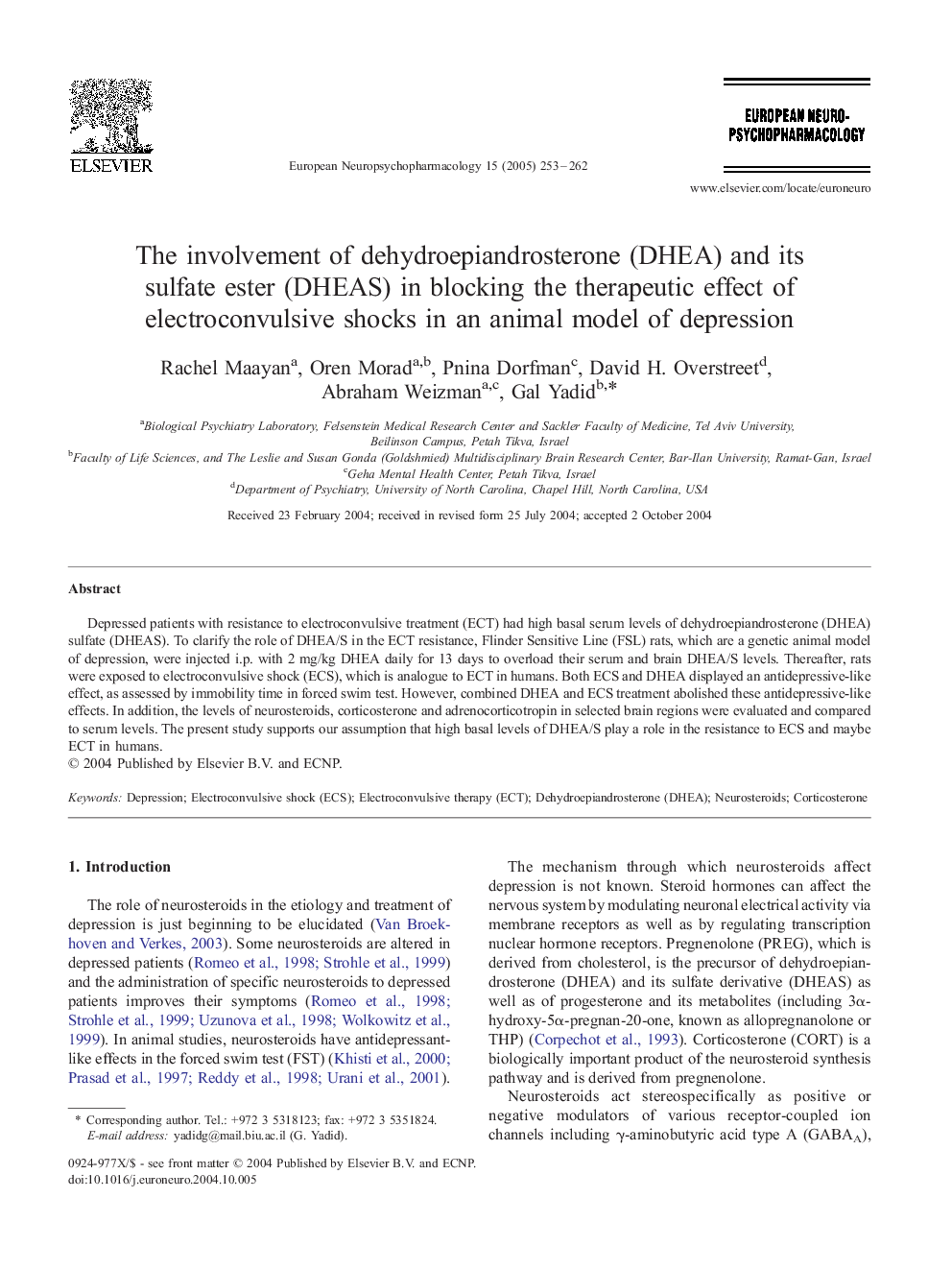| Article ID | Journal | Published Year | Pages | File Type |
|---|---|---|---|---|
| 10298216 | European Neuropsychopharmacology | 2005 | 10 Pages |
Abstract
Depressed patients with resistance to electroconvulsive treatment (ECT) had high basal serum levels of dehydroepiandrosterone (DHEA) sulfate (DHEAS). To clarify the role of DHEA/S in the ECT resistance, Flinder Sensitive Line (FSL) rats, which are a genetic animal model of depression, were injected i.p. with 2 mg/kg DHEA daily for 13 days to overload their serum and brain DHEA/S levels. Thereafter, rats were exposed to electroconvulsive shock (ECS), which is analogue to ECT in humans. Both ECS and DHEA displayed an antidepressive-like effect, as assessed by immobility time in forced swim test. However, combined DHEA and ECS treatment abolished these antidepressive-like effects. In addition, the levels of neurosteroids, corticosterone and adrenocorticotropin in selected brain regions were evaluated and compared to serum levels. The present study supports our assumption that high basal levels of DHEA/S play a role in the resistance to ECS and maybe ECT in humans.
Keywords
Related Topics
Life Sciences
Neuroscience
Biological Psychiatry
Authors
Rachel Maayan, Oren Morad, Pnina Dorfman, David H. Overstreet, Abraham Weizman, Gal Yadid,
